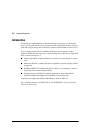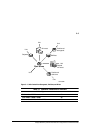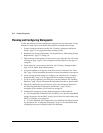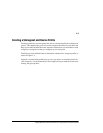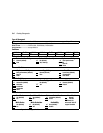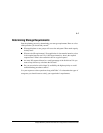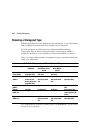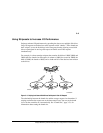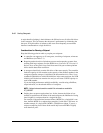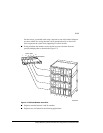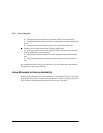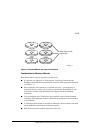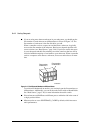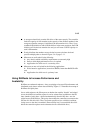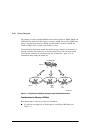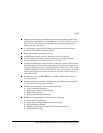
3–10 Creating Storagesets
A major benefit of striping is that it balances the I/O load across all of the disk drives
in the storageset. This can increase the subsystem’s performance by eliminating the
hot spots, or high localities of reference, that occur when frequently accessed data
becomes concentrated on a single disk drive.
Considerations for Planning a Stripeset
Keep the following points in mind as you plan your stripesets:
■ A controller can support up to 45 storagesets, consisting of stripesets, mirrorsets
and RAIDsets (see Table 3–1).
■ Reporting methods and size limitations prevent certain operating systems from
working with large stripesets. See the HSZ80 Array Controller ACS Version 8.3
Release Notes or the Quick Setup Guide that came with your software platform
kit for details about these restrictions.
■ A storageset should only contain disk drives of the same capacity. The controller
limits the capacity of each member to the capacity of the smallest member in the
storageset when the storagest is initialized (the base member size). Thus, if you
combine 9 GB disk drives with 4 GB disk drives in the same storageset, the 4 GB
disk drive will be the base member size and you will waste 5 GB of capacity on
each 9 GB member.
If you need high performance and high availability, consider using a RAIDset,
striped mirrorset, or a host-based shadow of a stripeset.
NOTE: A striped mirrorset cannot be created if the mirrorsets are enabled for
DT_SUPPORT.
■ Striping does not protect against data loss. In fact, because the failure of one
member is equivalent to the failure of the entire stripeset, the likelihood of losing
data is higher for a stripeset than for a single disk drive.
For example, if the mean time between failures (MTBF) for a single disk is one
hour, then the MTBF for a stripeset that comprises N such disks is l/N hours. As
another example, if a single disk’s MTBF is 150,000 hours (about 17 years), a
stripeset comprising four of these disks would only have an MTBF of slightly
more than four years.



